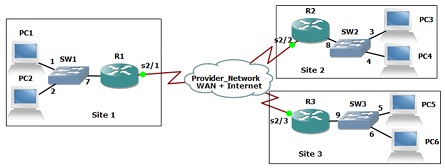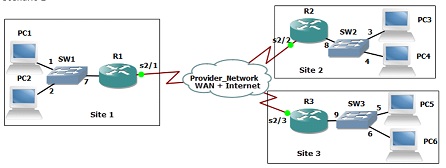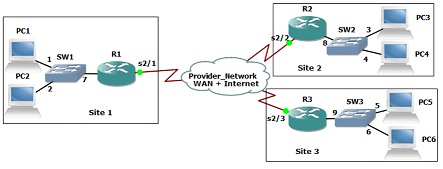Reference no: EM133088006
Task 1 - Network Problem Scenarios
Assessment Practical Tasks
Scenario 1
The user at PC2 has called the helpdesk. Internet access is slow intermittently throughout the day. IP phone voice quality is also unacceptable during those same times periods. A technician has been asked to respond. Below are the steps taken by the technician, along with the reasoning behind his actions.

(a) What does this confirm?
(b) Based on this output, what is the duplex setting on SW1 Port 2?
(c) After the changes are implemented, what actions should be taken?
Scenario 2

(a) Why was the WAN connection a possible cause of the problem?
(b) What is the likely effect of the significant bottlenecks and congestion on the managers' report?
(c) Suggest a resolution for this problem.
Scenario 3

(a) What should be done with unused and/or insecure protocols and services?
(b) When testing the upgrading process of the software or system, there should also be a defined downgrading process as well that could be used to revert back to a previous version of the software or system. Why would this be needed?
(c) Provide an example of such a process.
Task 2 - Identification and Resolution of Network Problems
Guidelines:
Using Cisco Packet Tracer v8.1.1, identify 3 different faults in the network and rectify the network problems. Furthermore, configure a Web Server and DNS services in your network.
Your document must include:
Introduction
Description of what you will do during this task (1 paragraph)
List at least 3 different standards relevant to this project, from:
International Organisation for Standardisation (ISO)
International Electrotechnical Commission (IEC)
Australian Standards (AS)
Naming Standards
Explain the naming standards that you are going to use in your network (e.g. B2-L2-101 stands for device that is being used in Building 2, Level 2, Room 1, computer 1)
Management Information Base (MIB)
Brief explanation of Management Information Base (MIB) - 1 paragraph
Produce a Management Information Base (MIB)
Show SNMP implementation (screenshot and explanation)
Show the information using MIB Browser (screenshot and explanation)
Network Performance Benchmark
Using any network performance tools, create a benchmark by measuring the network performance of your home (e.g. in the morning or in the afternoon)
Give an explanation (is the performance good or bad, and why)
Troubleshoot and Rectify network problems
Identify 3 faults in the network given
Screenshot of the fault and root cause of the problems
Fix the 3 faults that you found
Screenshot of your configuration, crop your screenshot making sure all the relevant information is captured and make a small comment of what the screenshot is about.
Implementation
Screenshot of your configuration, crop your screenshot making sure all the relevant information is captured and make a small comment of what the screenshot is about.
Configure Web and DNS services in your network
Test of the services
Review Fault Resolution and Recommendations
IP addresses table (device name, IP address, subnet mask, port, password)
Review of the fault identified
Recommendations
Prevention methods to implement
Knowledge questions
What is a Management Information database or Management Information Base (MIB)?
What do network baselines tell you?
What is the difference between network performance management and network performance monitoring?
Answer True or false and explain why: The most obvious cause of a problem is usually the correct one.
Answer True or false and explain why: Server troubleshooting takes precedence over user productivity.
Answer True or false and explain why: Testing a solution to a troubleshooting issue involves recreating the original problem, if possible.
Answer True or false and explain why: Documentation of a troubleshooting effort should begin as soon as the problem is resolved.
What Is a Network Maintenance Plan?
Describe two common routing issues and how to resolve them.
How can ping be used as a diagnostic or testing tool?
Describe how you would approach troubleshooting local connectivity problems.
Where can you get further information and support on Cisco networking equipment?
Outline the Top-Down Troubleshooting Approach.
A slow data connection or poor data management practices can have a ripple effect across your business, hampering not only your efficiency, but your data security as well. If it takes too long for an employee to backup files-or if the process becomes too complicated-they may avoid performing that task. Similarly, if a task takes too long to complete, there is a greater chance of it being interrupted and never completed. Businesses looking to improve the flow of data through their networks can focus on two things: their network efficiency, and the way they manage data. Suggest two ways to improve the flow of data through their networks.
Attachment:- Network problems - Identify and resolve.rar